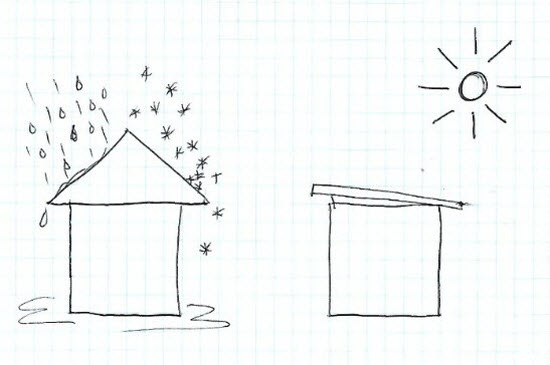But without designing the snow retention based on accurate testing you could be wishing you had that steep slope and metal roof which was always intended to shed snow.
Minimum slope for terracotta tile roofs to shed snow.
Tile roofs are a staple of southwest architecture.
People have been killed by snow avalanches sliding off roofs during big snow winters.
Such roofs are found in norway northern europe and in the northern u s.
Basically the steeper the pitch the better it can shed snow and rain.
The span for both roofs was 200 feet or more.
Other tile roof systems rely on the tile design and installation to shed water effectively using the underlayment as a surface padding as leak protection during installation.
A high pitched roof shows the greatest surface to the street and is associated with traditional structures.
Such roofs are common in the south and southwestern u s.
Low slope standing seam roofs presently we are consulting on a couple of metal roofs where the architect designed a slope of 1 4 inch per foot.
The higher the roof pitch the more often the snow slides off.
Adding a covered porch adds exterior space to a house and providing a.
Both snow retention items are sometime necessary.
There are advantages and disadvantages to having a steep pitch versus a shallow or low pitch the most obvious of which is the roof s ability to shed or withstand heavy snow rain or wind.
Such as in minnesota.
Both are located in southern new england not serious snow country for a mainer like myself but problems developed nonetheless.
The minimum pitch required depends on material.
It is critical that a designer specify enough snow retention devices based on the slope and snow load.
Pitch the pitch also known as slope or grade is the way in which the roof angles from the horizontal toward its highest point.
A roof protects a house and porch from snow and rain as well as the heat of the sun.










